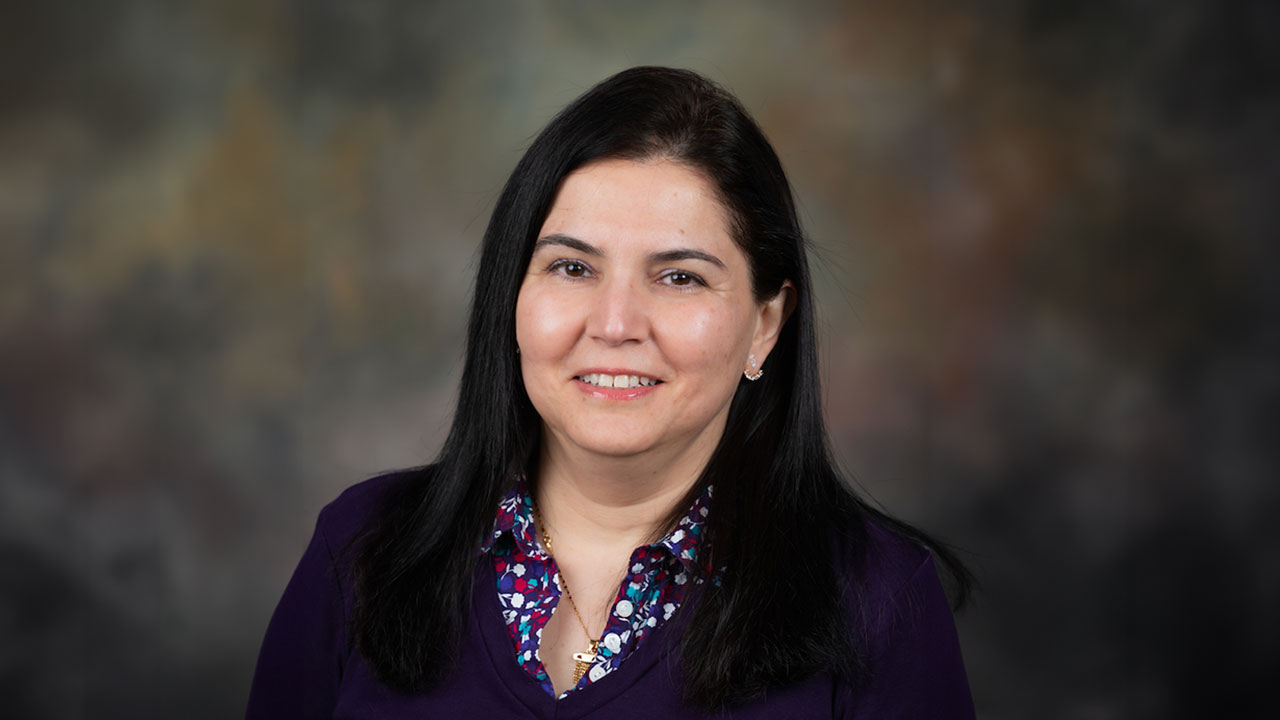The Expert Answers Q&As and columns reflect the expertise and opinions of individual faculty members and do not necessarily represent an official policy or position of the university.
content body

Razan Al Fakir is an assistant professor in the Department of Speech, Language and Hearing Sciences at Auburn University.
Each year, an estimated 14 million older adults fall. Over one-third of these individuals will receive medical treatment or experience reduced mobility, according to the Centers for Disease Control and Prevention. Falling can also take a toll on an older adult’s mental health. Assistant Professor Razan Al Fakir said fall-related anxiety is especially prevalent among older adults who have fallen, but can afflict older adults at any point.
As Falls Prevention Awareness Week takes place Sept. 23-27, Al Fakir shares her expertise about fall-related anxiety. She normalizes this pervasive condition and sheds insight into how fall-related anxiety can impact unexpected facets of older adults’ health.
What is fall-related anxiety?
RAF: Fall-related anxiety is the fear of falling, commonly experienced by adults and older adults, which can lead to avoiding activities or becoming less active. This anxiety often stems from a previous fall, concerns about mobility, fear of injury or the presence of chronic health conditions that affect the balance system and/or mental health. Fall-related anxiety can significantly impact quality of life by reducing independence and confidence in daily activities, making it a major public health concern, particularly among older adults.
How common is fall-related anxiety among older adults who have experienced a fall versus those who have not fallen?
RAF: Fall-related anxiety is common among older adults, affecting 40-73% of those who have fallen and 20-39% overall. However, some studies suggest that fall-related anxiety can affect over 85% of older adults.
How is fall-related anxiety connected to other aspects of health, including hearing?
RAF: Fall-related anxiety is linked to various health conditions, including anxiety, depression, neurological disorders, ear diseases, affecting hearing and balance, diabetes, cardiovascular disease and musculoskeletal issues. A key but often overlooked aspect that can be a consequence of any of these health conditions is the alteration in gaze behavior during walking, where individuals excessively focus on their steps or surroundings while walking.
What are some of the potential impacts of an older adult focusing excessively on walking?
RAF: This change leads to increased conscious processing of walking movements, impacting overall daily functioning by overloading cognitive resources, slowing down walking, causing stiffness, reducing stride length and disrupting the natural flow of movement, all of which heighten the risk of falls. Moreover, excessive focus on walking can amplify anxiety about falling, reducing confidence and creating a cycle of fear that worsens fall-related anxiety and discourages activity. Additionally, fall-related anxiety can contribute to third-party disability, where the fear and resulting limitations also affect caregivers or family members, impacting their quality of life and increasing the overall burden of care.
What treatments and/or recommended approaches are currently in place to help older adults with fall-related anxiety?
RAF: Fall-related anxiety is a complex, multifactorial condition that requires holistic management. This includes physical interventions like exercise programs focusing on balance, strength training and tai chi, which help improve physical stability and confidence. Psychological approaches, such as cognitive-behavioral therapy, address the fear of falling by changing negative thought patterns and building coping strategies. Environmental modifications, such as removing tripping hazards and improving lighting at home, along with regular health check-ups and managing chronic conditions, are also critical components of a comprehensive approach to managing fall-related anxiety.
What steps can older adults and their families take to help prevent falls?
RAF: Older adults and their families can participate in many activities such as:
To help prevent falls, older adults and their families can take several proactive steps, making daily choices that promote stability and reduce the risk of falling:
- Incorporate simple exercise: Get at least 15 minutes of simple exercise each day to maintain strength and balance exercise each day.
- Join a balance program: Participate in a balance and exercise program like tai chi or “A Matter of Balance” to improve coordination and stability.
- Join a chronic disease self-management program: Consider joining a Chronic Disease Self-Management Program where you can learn to develop action plans that incorporate lifestyle changes, improve nutrition, increase physical activity and address emotional issues associated with chronic conditions.
- Seek professional advice: Ask your health care provider for a falls risk assessment. You can also use a Falls Risk Self-Assessment to start the conversation.




